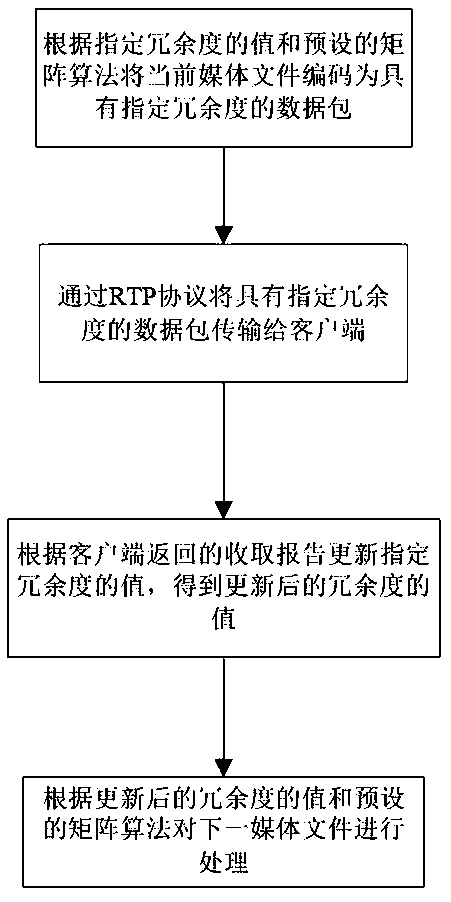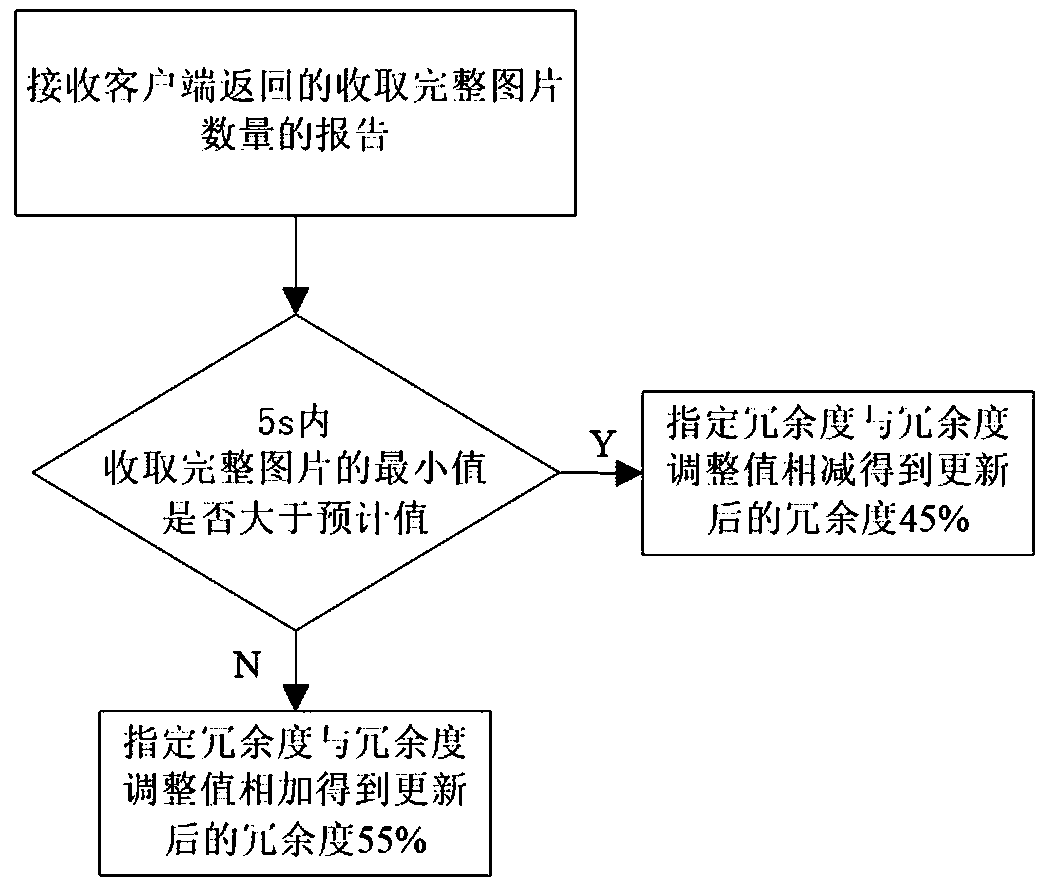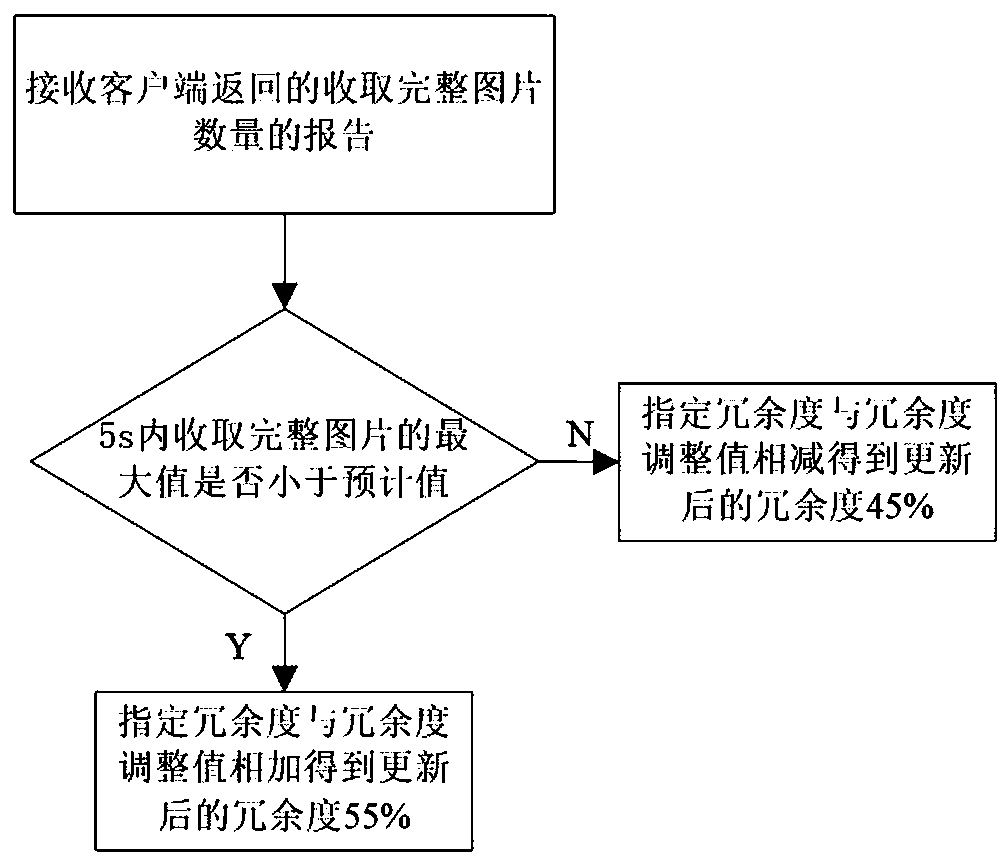Same-screen data transmission method, device and system for multimedia classroom
A data transmission method and multimedia classroom technology, applied in the field of data transmission, can solve the problems affecting the teaching and presentation effect on the same screen, limited network bandwidth, and high bandwidth occupancy rate, and achieve reasonable configuration, smooth display or playback, reduce The effect of bandwidth usage
- Summary
- Abstract
- Description
- Claims
- Application Information
AI Technical Summary
Problems solved by technology
Method used
Image
Examples
Embodiment 1
[0061] like figure 1 As shown, the same screen method of the multimedia classroom of the present invention comprises the following steps:
[0062] 1) Turn on the same screen function on the server side, and the server side responds to the operation and encodes the media file. The media file includes pictures, audio, video, etc. In this embodiment, pictures are taken as an example. The encoding method of this embodiment can use various methods to increase data Communication reliability methods, such as Forward Error Correction (FEC), Automatic Repeat reQuest (ARQ) and Hybrid Automatic Repeat reQuest (HARQ), because ARQ technology relies on Error code detection and retransmission requests are used to ensure signal quality, and there is a relatively serious packet loss problem in multimedia classrooms at present. Therefore, the method of this embodiment uses FEC to encode data redundantly to generate data with specified redundancy. Packets to prevent data loss, and provide the f...
Embodiment 2
[0100] like Figure 10 As shown, the method of this embodiment is basically the same as that of Embodiment 1. The difference is that in this embodiment, the server only needs to collect statistics on the collection reports sent by the client, and does not need to calculate the maximum value or intermediate value or The calculation of the average value improves the work efficiency of the server side. The collection report of this embodiment is a collection report that requests to increase or reduce redundancy. The specific steps of step 3) are:
[0101] 3.1) Receive the collection report requesting to increase redundancy and the collection report requesting to reduce redundancy returned by the client;
[0102] 3.2) Set the redundancy adjustment value to 5%, set the threshold of the number of clients to 30% of the number of all clients, and judge whether the number of clients requesting to increase redundancy exceeds the threshold of the number of clients, and if so, specify the...
Embodiment 3
[0114] The method, device and system of this embodiment are basically consistent with Embodiment 1, the difference is that, as Figure 13 As shown, the same-screen data transmission method for multimedia classrooms of this embodiment, when applied to the server side, also includes a step of reviewing the value of the specified redundancy between steps 3) and 4), specifically: judging the updated redundancy Whether the value of the redundancy is between the preset highest redundancy and the lowest redundancy, if yes, go to step 4), otherwise the value of the adjusted and updated redundancy is between the highest redundancy and the lowest redundancy Then go to step 4).
[0115] In this embodiment, the highest redundancy is set to 100%, and the lowest redundancy is set to 10%. During the transmission process, the server updates the value of the specified redundancy according to the collection report sent by the client. Get the value of the updated redundancy, and when the value ...
PUM
 Login to View More
Login to View More Abstract
Description
Claims
Application Information
 Login to View More
Login to View More - R&D
- Intellectual Property
- Life Sciences
- Materials
- Tech Scout
- Unparalleled Data Quality
- Higher Quality Content
- 60% Fewer Hallucinations
Browse by: Latest US Patents, China's latest patents, Technical Efficacy Thesaurus, Application Domain, Technology Topic, Popular Technical Reports.
© 2025 PatSnap. All rights reserved.Legal|Privacy policy|Modern Slavery Act Transparency Statement|Sitemap|About US| Contact US: help@patsnap.com



